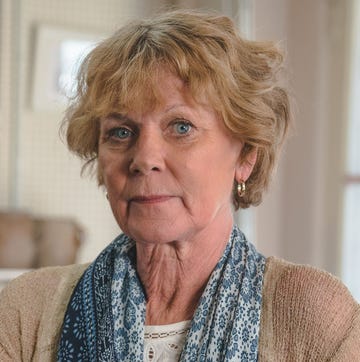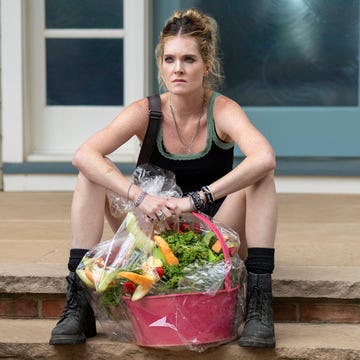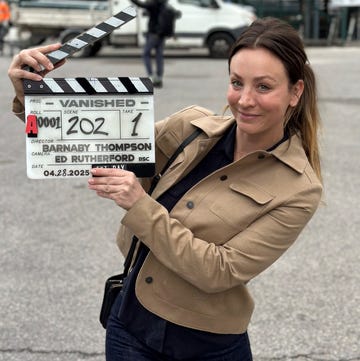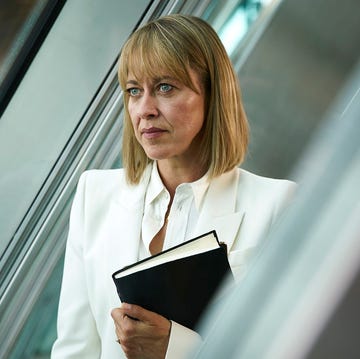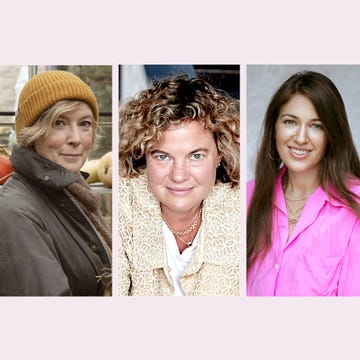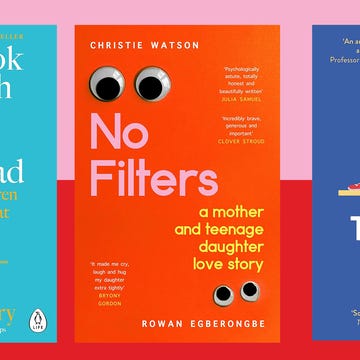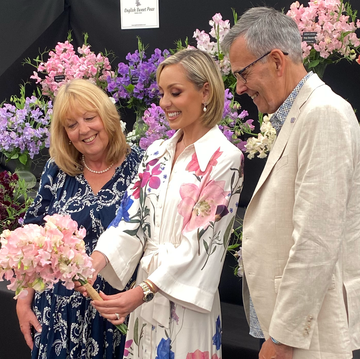In September 2020, when we could travel again, I said to my husband, “Let’s go to France!”. We hadn’t left London since the first Covid lockdown and I was desperate to see a horizon. We called the woman we rented a house from each summer in a busy harbour village in the South of France, and she was thrilled. She hadn’t had a booking all year.
Every day, on my way to have coffee or to buy bread, I walked past the same house. I'd peep through the railings, trying to make out the heavy, wooden door through the forest of bamboo. The grey shutters were tightly closed. Emerald green paint peeled from wrought iron balconies. And then, one day, I noticed it was for sale.
Six months’ later, I was hacking a path through the bamboo forest so the removal men could carry all our worldly goods through those heavy wooden doors. We’d never meant to move to France, but we’d fallen under the spell of this Sleeping Beauty house, sold our home in London, and now here we were.
There were small matters of a new roof, central heating, rewiring, new windows, repairing and painting the façade, but honestly, I couldn’t wait to get my hands in the soil. When all around me was chaos, planting a tub of scarlet geraniums felt like an easy win.
But first, the bamboo. Let me just take a second of our time here together to curse the person who first thought it a good idea to sell the most invasive bamboos to the unsuspecting public. At a time when I really wanted to be wafting around in a straw hat with a basket over my arm, cosplaying a woman in a Monet painting , I was scrabbling together 1,200€ to pay a man with a digger to remove every last cursèd bamboo root because if you leave the tiniest scrap, it’ll be back, rustling away thuggishly, laughing in the face of your dreams for a potager.
Having removed the bamboo, we discovered a small, tiled 70s dipping pool which was, delightfully, in the shape of a uterus. The pump was also broken, so it meant whenever it rained, water stood in the bottom and transformed it into a highly successful mosquito breeding programme. Another man with a digger came to remove that.
Now I had my blank canvas, I could embark on the fun part, the planting. There’s a huge contrast between gardening in my shady London terrace and creating a garden in the south of France from scratch. Years ago, I’d read The Dry Gardening Handbook by Olivier Filippi, and I was delighted to find his nursery was only a short drive from us in Mèze. Quite dangerously short, frankly. Over that summer, I turned our Volvo into a moving herbaceous border. I filled the boot several times over with different varieties of rosemary, lavender and thyme, euphorbias and cistus, and different ornamental grasses. From Pépinières de Montimas, another nearby nursery, I bought many ornamental sages, agapanthus, irises, roses, jasmine, honeysuckle and a lemon tree.
One of the greatest delights has been seeing how easily some of the plants I struggled to grow in England grow very easily here. Lavenders flower all year round so abundantly, I have to steel myself to prune them. They seed themselves promiscuously in the oyster paths. I bought about six lavenders, I now have more than twenty. Schiaparelli-pink cistus and shriek-orange California poppies fill the central bed each spring. Agapanthus throw up spear after spear of deep blue flowers in the pots I placed by the front steps. Blue, yellow and deep purple irises have already colonised parts of the garden. Phlomis and santolinas dot the flowerbeds with gold.
I’ve been surprised by how quickly the roses I bought – David Austin’s finest, you can take the girl out of England, etc – have established themselves. I’ve planted the familiar ones I’ve planted in every garden I’ve ever created, such as Constance Spry, and discovered new ones such as the exquisite golden-apricot Dannahue.
Because our house is on the route of everyone’s daily walk between the village and the port, gardening helped me get to know my neighbours. If I’m out weeding, people often stop for a chat through the railings. The older people sometimes tell me they’ve known this house all their lives and they’re happy to see it coming back to life, to see the garden full of flowers.
I’ve long believed you should grow where you’re planted, whatever the circumstances. Moving to France in my fifties, while joyful in so many ways, has been challenging too. Within a year, my father died, my mother-in-law died, then my little dog, the heartbeat at my feet, died in his bed two weeks after his eighteenth birthday. The garden was my solace. As a writer, when I couldn’t form words on a page, the garden let me unravel my thoughts, work out my grief. As I pulled a bucket of soft weeds or tied in a rose, I formed lucid sentences in my head in a way I couldn’t when I sat at my desk. As I tended my plants, I put down my own roots. Slowly, I became part of this place.
Five highly-rewarding flowering plants for dry gardens
All these plants just do their own thing with precious little intervention from me.
California poppies Eschschozia California They are so reliably cheerful, with their shriek orange flowers and if you plant one, the next year you’ll have ten. Minimum.
Cistus Cistus x purpureus papery, Schiaparelli-pink flowers with a splotch of purple in the middle. Joyful. Easy. Like all my favourite people.
Lavender of all kinds I have lots of English lavender Lavandula angustifolia throwing up their purple spikes right alongside clumps of French lavender, Lavandula dentata in deeply-fragrant entente cordiale.
Phlomis Phlomis cretica, native to the mountains of Crete, I love its silvery, grey-green woolly leaves and bold yellow flowers.
Sage of all kinds I particularly love magenta blackcurrant sage Salvia microphylla and scarlet pineapple sage Salvia elegans. You can toss the leaves in salads and drinks, but most of all I love the smell of them when you brush past them in the garden.








